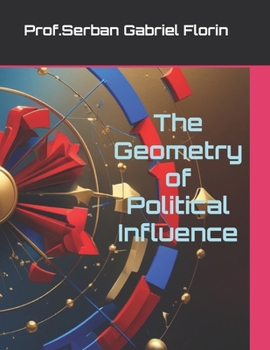The Geometry of Political Influence
"The Geometry of Political Influence" delivers a revolutionary breakthrough, introducing a mathematical-spatial paradigm that fundamentally reshapes how we conceptualize, analyze, and predict political phenomena.
This book reimagines politics as a dynamic space where actors (individuals, parties, movements), events (campaigns, protests), and ideologies interact as points, flows, and networks.
Through innovative concepts such as political variety, currents of influence, narrative extension, and political intersections, it provides a cohesive and adaptable framework for understanding phenomena ranging from grassroots movements to global conflicts.
This paradigm transcends traditional political science in five transformative ways:
Bridging Quantitative and Qualitative Divide: By framing politics as a measurable yet nuanced space, the framework enables rigorous quantification of abstract concepts like influence and polarization while preserving the complexity of political relationships.
It creates a shared language that unites data-driven precision with interpretive depth.
Integrating Micro and Macro Perspectives: Political science has long looked to connect individual actions to systemic outcomes.
This framework achieves that by modeling how discrete events (a viral tweet, a policy announcement) ripple through the political space, shaping broader trends like ideological shifts or coalition formations.
Unprecedented Predictive Power: Unlike traditional polling or linear statistical models, this paradigm captures the non-linear, dynamic nature of political influence as it propagates through social networks and media ecosystems.
By tracking currents of influence and narrative extensions, it predicts shifts in public opinion and political alignments with remarkable accuracy.
Unified Analytical Language: The framework offers a consistent set of tools for analyzing diverse political contexts-from local elections to international diplomacy.
This enables comparative studies that uncover universal patterns in how power works, whether in a community protest or a global summit.
Interdisciplinary Innovation: Drawing on mathematics, network theory, communication studies, sociology, and computer science, the framework reflects the interconnected reality of modern political systems.
It uses cutting-edge tools, such as social media analytics and computational modeling, to deliver a holistic understanding of influence.
"The Geometry of Political Influence" arrives at a critical juncture when political science must evolve to address 21st-century challenges.
This book reimagines politics as a dynamic space where actors (individuals, parties, movements), events (campaigns, protests), and ideologies interact as points, flows, and networks.
Through innovative concepts such as political variety, currents of influence, narrative extension, and political intersections, it provides a cohesive and adaptable framework for understanding phenomena ranging from grassroots movements to global conflicts.
This paradigm transcends traditional political science in five transformative ways:
Bridging Quantitative and Qualitative Divide: By framing politics as a measurable yet nuanced space, the framework enables rigorous quantification of abstract concepts like influence and polarization while preserving the complexity of political relationships.
It creates a shared language that unites data-driven precision with interpretive depth.
Integrating Micro and Macro Perspectives: Political science has long looked to connect individual actions to systemic outcomes.
This framework achieves that by modeling how discrete events (a viral tweet, a policy announcement) ripple through the political space, shaping broader trends like ideological shifts or coalition formations.
Unprecedented Predictive Power: Unlike traditional polling or linear statistical models, this paradigm captures the non-linear, dynamic nature of political influence as it propagates through social networks and media ecosystems.
By tracking currents of influence and narrative extensions, it predicts shifts in public opinion and political alignments with remarkable accuracy.
Unified Analytical Language: The framework offers a consistent set of tools for analyzing diverse political contexts-from local elections to international diplomacy.
This enables comparative studies that uncover universal patterns in how power works, whether in a community protest or a global summit.
Interdisciplinary Innovation: Drawing on mathematics, network theory, communication studies, sociology, and computer science, the framework reflects the interconnected reality of modern political systems.
It uses cutting-edge tools, such as social media analytics and computational modeling, to deliver a holistic understanding of influence.
"The Geometry of Political Influence" arrives at a critical juncture when political science must evolve to address 21st-century challenges.
Format:Paperback
Language:English
ISBN:B0FD3T8C1R
ISBN13:9798284932872
Release Date:June 2025
Publisher:Independently Published
Length:430 Pages
Weight:2.18 lbs.
Dimensions:0.9" x 8.5" x 11.0"
Customer Reviews
0 rating





